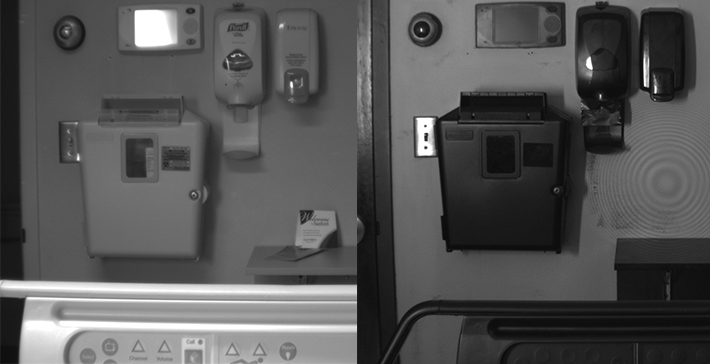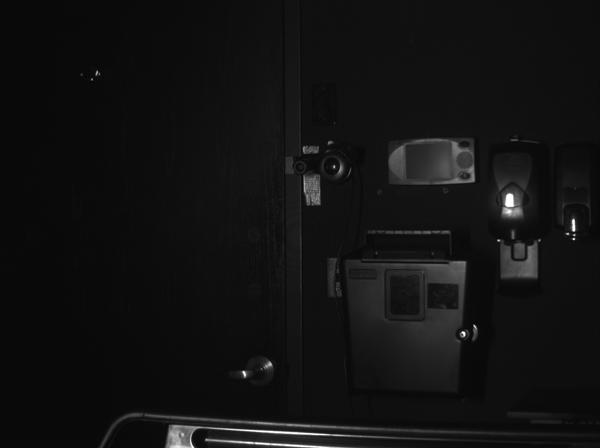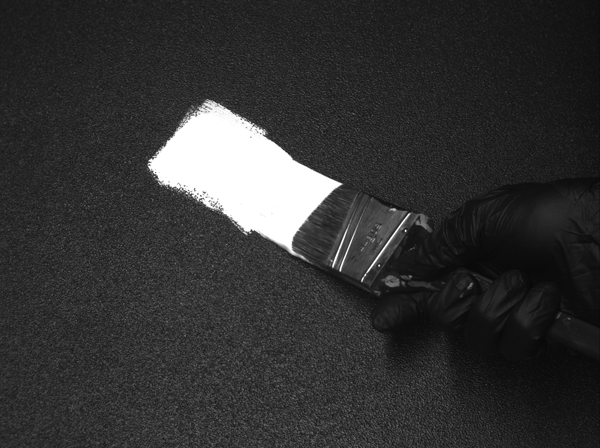You’ve probably never worried too much about it, but humans are incapable of seeing UV light. Because of this, it is impossible for us to see which parts of a hospital room are getting illuminated with UV and which are in shadow. Worse yet, we aren’t even able to use visible brightness as an indicator, since surfaces that look very reflective in visible light might be completely absorbing in UV light.
But thanks to modern CCD camera technology, there actually is a way to essentially “see” UV. Certain cameras are sensitive to UV light, including some which are sensitive down to the UV-C range. These aren’t ordinary cameras, such as what you’d find on a smartphone. Rather, they are specially-designed cameras used for industrial purposes. Here is an interesting link with more information.
By taking a camera sensitive to UV-C and adding filters that block out everything other than UV (visible light, infrared, etc.), we’ve been able to construct a UV-C imaging system that allows us to visualize UV-C absorption and reflectivity. What this approach can produce are monochromatic images in which UV-C absorbing surfaces look dark, while UV-C reflecting surfaces look bright. The degree of brightness is proportional to the intensity of the reflected light. This allows us to demonstrate the reflective properties of Lumacept, and to show how most surfaces in a room absorb UV-C.
Here’s one example.

On the left is a visible image from a hospital room. It shows a bed rail in the foreground and a sharps container and two dispensers mounted on a wall. The image on the right is a UV-C image. The bed rail and other objects are completely black, indicating that they are absorbing UV. In fact, the only surfaces that are reflecting UV are the wall itself, because it was painted with Lumacept, and the metal light switch plate.
So what did that wall look like before it was painted with Lumacept? Here’s a slightly different view of the same wall with the original standard paint. Note that the wooden door also absorbs UV strongly.

This is a UV-C image of Lumacept being brushed onto an absorbing surface consisting of a vinyl wall covering.

If you are familiar with UV disinfection devices, you might have noticed that when a UV lamp turns on, it emits a violet glow. Doesn’t that mean we are seeing UV? The answer is no. Most types of UV light sources, including mercury, amalgam, or xenon lamps, produce some visible light in addition to UV light. The reason for this has to do with the physics of light emission from the gases inside the bulb. So all we are seeing is the small amount of visible light emitted by the lamp. These lamps are usually designed to produce as little visible light as possible, so as not to waste energy on these non-germicidal wavelengths.
Have any technical or not-so-technical questions about UV? We’re happy to help. Contact us at info@lumacept.com.
